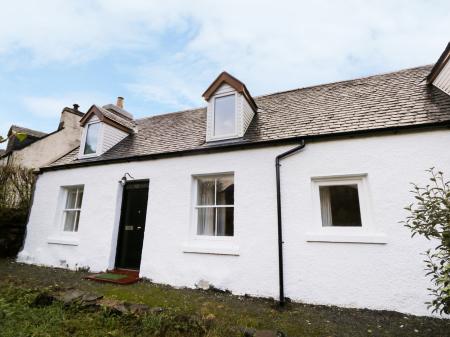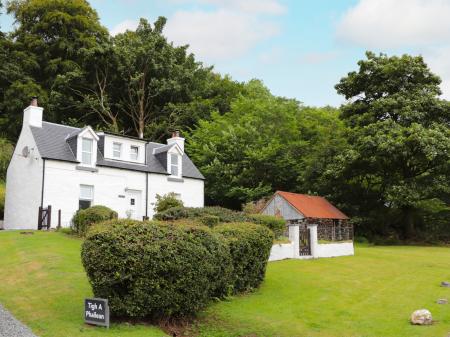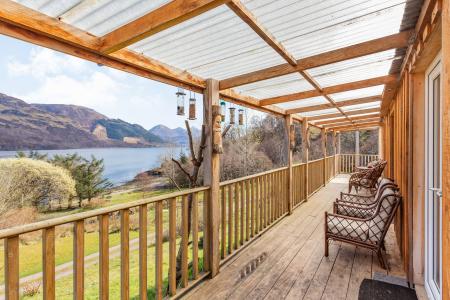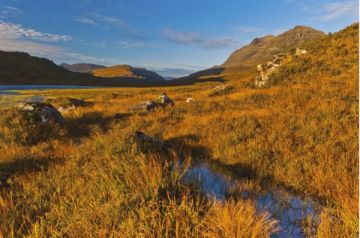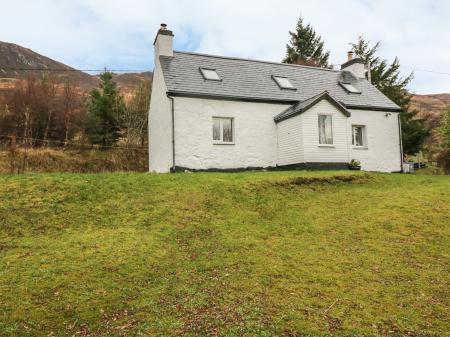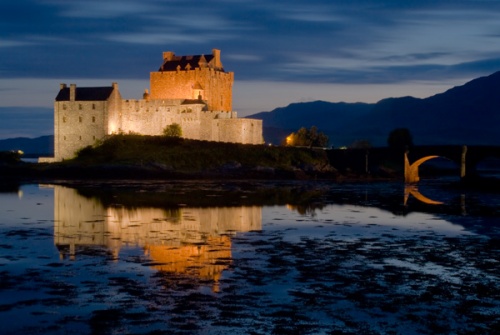

History
The small island of Donan stands off the north bank of Loch Duich, in a stunningly beautiful location surrounded by hills. The island has been fortified since the Iron Age, and there is evidence of a vitrified fort beneath the foundations of Eilean Donan Castle. Another ancient remain is the outline of a human foot, carved into the rock.
Who was Donan?
The island and castle are named after Donan, a 7th-century Irish priest who was killed on the nearby island of Eigg in 617 AD. Donan came to the west coast of Scotland to try to convert the pagan inhabitants to Christianity.

There are two versions of his death; one says that he was attacked by pirates while saying mass. He asked to be allowed to finish mass, and his request was granted, after which he calmly faced death by beheading. Another version says that he and 150 followers were burned to death by a Pictish queen. He is traditionally said to be buried at Kildonan, on Arran.
While we know the island was fortified before written records existed, the first record of a castle dates to the 13th century, shortly after Alexander III had driven the Norse from western Scotland at the Battle of Largs in 1263. Alexander gave Eilean Donan to Colin Mackenzie, who had fought bravely at Largs.
Then the trouble began, for the Earl of Ross claimed Eilean Donan as well. The struggle for control of the island went on for decades, then in 1306 the Mackenzies gained favour by offering to shelter Robert Bruce after the Battle of Dail Rhig. Bruce's son, David II eventually confirmed the Mackenzie's right to the castle and estates.
Despite the fact that the Mackenzies owned Eilean Donan, the castle is most closely linked to the Macraes who acted as Constables on behalf of the Mackenzies. Loyal Macrae service earned them the nickname 'Mackenzie's coat of mail'.

The Macraes were no shrinking violets; their chief Big Duncan of the Battle Axe killed the Macdonald's clan champion at the Battle of the Parks in 1488. After that, the Macdonalds raided Eilean Donan repeatedly but were repulsed by the Macraes.
In 1539 the Macdonalds assembled a fleet of over 50 ships and besieged the castle. Duncan Macrae then fired an arrow that would end the feud once and for all; he struck the Macdonald's leader, Donald Gorm of Sleat, on the foot. The arrow sliced through an artery and Donald Gorm died shortly afterwards at Avernish.
The next time Eilean Donan made an appearance on the stage of history was in 1719 when the Spanish crown agreed to help the Jacobite cause and restore the House of Stewart to the throne. The Spanish king sent 300 soldiers, who managed to take the castle and set up a garrison. But their cause was doomed when 3 English frigates sailed into Loch Duich and bombarded the castle, destroying it utterly and leaving it a roofless ruin.
And so it remained for almost 200 years until John Macrae-Gilstrap restored the castle and rebuilt the beautiful causeway and bridge that link the castle to the shore. Macrae-Gilstrap wanted to restore the castle exactly as it had been in the medieval period, but no detailed plans of the site existed.

He relied on architect Farquhar MacRae, who was inspired by a dream to create the outline of the castle we see today.
It was only after restoration work was complete that original plans for the castle came to light. So, while what you see today may not be authentic in every sense of the word, it closely approximates what the castle would have been like 500 years ago. You can visit the banqueting hall, family bedchambers, and kitchens, as well as the inner courtyard and the grounds outside the wall that encircles the courtyard.
Visiting
Today there is a large parking area and modern visitor centre on the shore, and you have to walk across the bridge to the castle and view the restored interiors. I've been to Eilean Donan 5 times, and honestly, I can't imagine a more beautiful castle in Britain. The location is superb, and on a still summer evening with the castle reflected in the waters of the loch, there can be no place more romantic in all the British Isles.





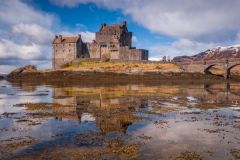
 We've 'tagged' this attraction information to help you find related historic attractions and learn more about major time periods mentioned.
We've 'tagged' this attraction information to help you find related historic attractions and learn more about major time periods mentioned.